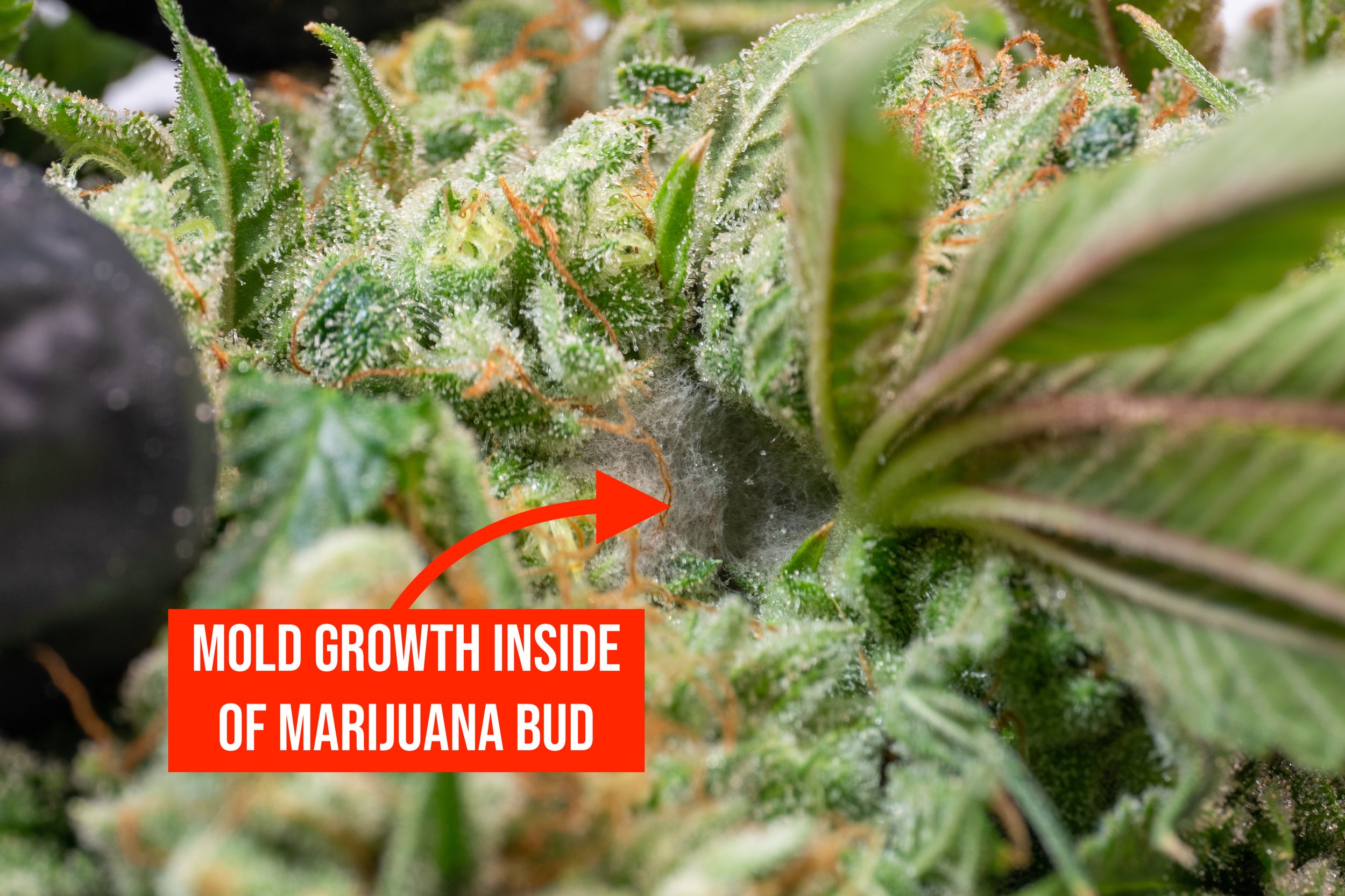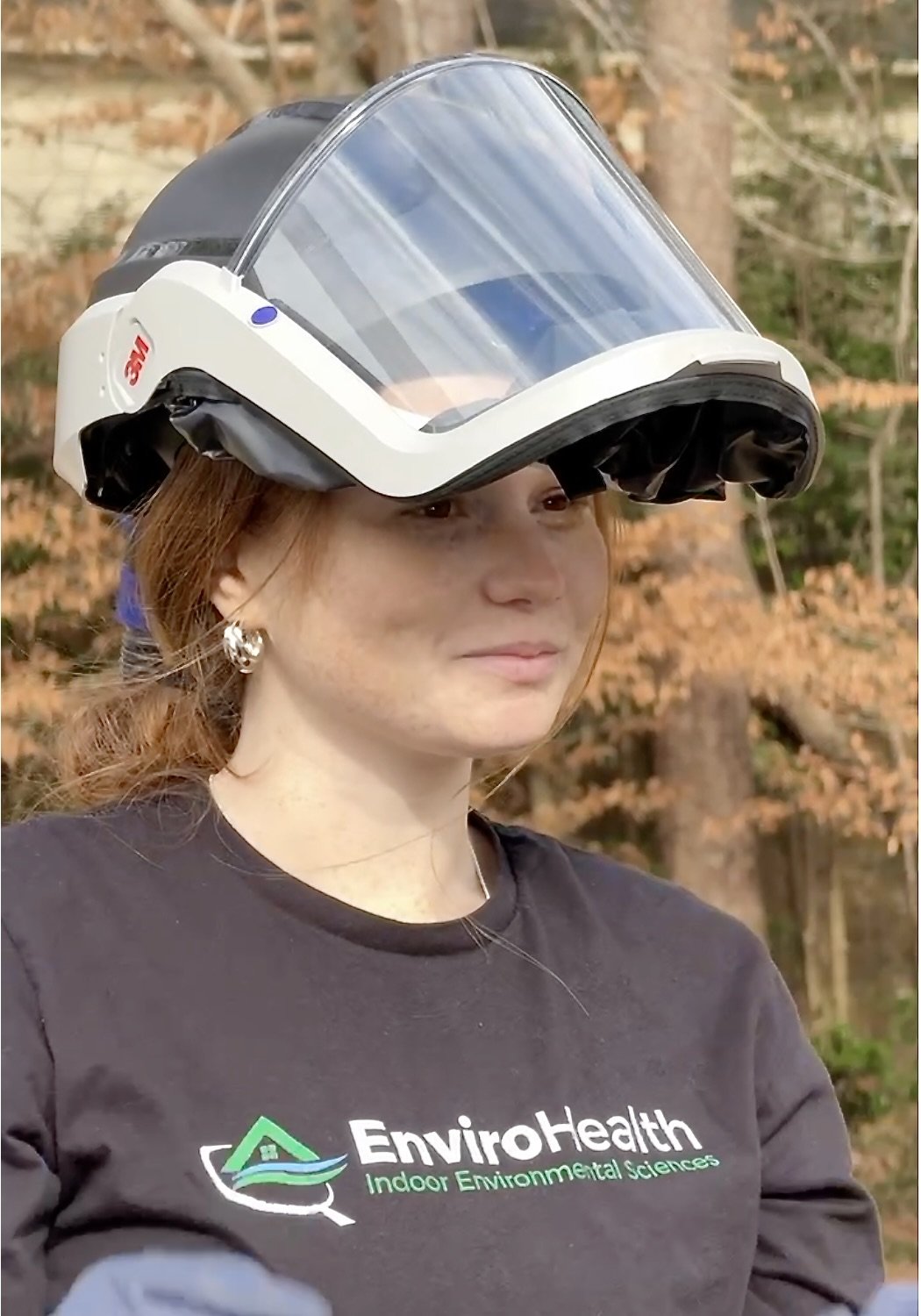The Possible Threat of Mycotoxins in Marijuana
Medical marijuana has seen a rise in the past decade as its use has become legalized in a number of places. However, the possible health concerns that mycotoxins in marijuana can pose to immunocompromised individuals is rarely a topic of discussion. Can marijuana have mold growing on it? What if there’s mold on my marijuana? And how do I do my best to not be affected? These are the questions we strive to clarify.
Can mycotoxins be in Marijuana?
Like any other plant, cannabis makes a great home for fungi, especially considering the higher temperature and humidity often involved in growing. In fact, over 100 species of fungi are associated with cannabis and hemp. Some of these species are the same species that often cause indoor air quality problems, such as Penicillium and Aspergillus, and are pretty common names within the immunocompromised community. Aspergillus was actually observed to account for 43% of these documented fungal infections. Fungal infections can cause respiratory symptoms, or infections of skin or even lung tissue if inhaled by an at-risk individual. Many fungi that infect marijuana also produce mycotoxins, toxic compounds that can pose a threat to humans if ingested or inhaled. From our own experience and testing, marijuana tested at harvest have been found to contain elevated levels of mycotoxins in them due to various issues that had occurred during the growing and drying process.
Why would mold grow inside of the marijuana anyway?
What scientists already know is that the success of these fungi depends on multiple factors, such as the genetics and chemistry of the cannabis, the growing environment, and handling practices. For example, some types of cannabis could be more susceptible than others, or have a certain structure that makes them more prone to fungal growth. For example, indica strains tend to be more dense and bushier than the long and thin nature of sativa strains. If indica are being grown in tight packs with high humidity, moisture can get trapped in and between them. This excess moisture leads to mold growth.
On the other hand, indica has a much shorter flowering time, which reduces the amount of time they are at risk. Depending on when they are grown it also decreased the risk of exposure to late-season moisture. So there are pros and cons to both indica and sativa.
So how does a grower reduce their risks of fungal infections on their crops?
To reduce the chance of mold growth in cannabis cultivation, growers can implement a variety of strategies focused on environmental control, plant management, and proactive monitoring. Here are some key steps:
Control Humidity and Temperature: Maintain optimal levels of humidity and temperature throughout the growth cycle. This requires knowledge of psychrometrics, since temperature can affect humidity. We have seen some growers simply open up outdoor exhaust systems to bring in outdoor air since the relative humidity outdoors was lower than inside. However, upon opening outdoor air vents, they realize that their humidity actually increases in the grow room. This is because humidity is relative to temperature and dew point or grains per pound of moisture should be considered. being aware of what climate you are growing in and how to control it is crucial.
Ensure Proper Ventilation and Air Circulation: Use fans and ventilation systems to keep air moving and prevent stagnant air around the plants. This helps to evaporate any excess moisture on the plants and in the growing medium.
Implement Strategic Watering Practices: Water plants during the early hours so that any excess water on the leaves can evaporate throughout the day. Avoid overwatering and ensure that your growing medium drains well.
Maintain Cleanliness: Keep the grow area clean and free from debris. Remove any dead plant material promptly, as it can harbor mold spores.
Optimize Plant Spacing: Ensure that plants are spaced adequately to promote air circulation. Overcrowding can trap moisture and create conditions conducive to mold growth.
Use Mold-Resistant Strains: Whenever possible, choose strains known for their resistance to mold. This genetic advantage can significantly reduce the risk of mold issues.
Prune Plants Strategically: Pruning can help improve airflow and light penetration within the canopy. Removing excess foliage and non-essential branches reduces the plant's density, making it harder for moisture to become trapped.
Monitor and Adjust Environmental Conditions: Use hygrometers and thermometers to continuously monitor the grow room's conditions. Adjust your ventilation, heating, or cooling systems as necessary to maintain optimal conditions.
Inspect Plants Regularly: Regularly check your plants for signs of mold or mildew, especially in the dense inner parts of the canopy and near the soil. Early detection is key to preventing spread.
Use Dehumidifiers if Necessary: In areas with naturally high humidity or during critical periods of the grow cycle, use dehumidifiers to maintain optimal humidity levels.
Implement Soil and Substrate Management: Ensure that your soil or growing medium is not overly compacted and has good drainage. This prevents water from pooling and creating a habitat for mold.
Without keeping the principles in mind, it is likely that mold will grow in a grow room. Intuitively, you can imagine that this is a larger issue for marijuana that is not legally grown, and growth conditions (not to mention chemical addition) can widely vary.
Is there a way I can prevent getting bad marijuana?
Well, proper regulation would be key. However, because of how much is still unknown, this makes regulating mycotoxins in medical marijuana hard. While the FDA already regulates mycotoxins in food, there is no real nationwide standard for cannabis yet, and without knowing the safe vs. unsafe levels, it makes it challenging to assess the health impact on consumers.
In fact, there has only been one nationwide study that has been published that assessed the association between cannabis use and fungal infection. More studies must be done to confidently determine which exposure routes pose the most threat, what dosage and frequency of exposure are considered unsafe, and what amount of actual risk consuming these products poses to an immunocompromised individual.
A reliable way to test medical marijuana for concentrations of mycotoxins is also needed, as the complex structure and chemistry of cannabis make it difficult. While most states do already test for mycotoxins, these limitations make it difficult. It would also be great to see a way for consumers to test their own products, as things like oils are very difficult to detect mold on since you cannot see the buds yourself.
In the meantime, how do at-risk individuals ensure their safety when using cannabis? What we do know is that fungal infections are much more common after smoking cannabis, and made up 89% of documented fungal infections from cannabis use. This suggests that other routes of consuming cannabis may be less of a risk (such as oils and foods). We also know that based on the one nationwide study, cannabis users who were immunocompromised were 3.5 times more likely to develop an infection than non users. In the absence of definitive answers, the importance of continued research and the establishment of regulatory standards cannot be emphasized enough. As the medical marijuana landscape unfolds, a clearer understanding of the relationship between mycotoxins and immunocompromised individuals will hopefully emerge, providing guidance for safe and responsible usage.
In the meantime, the best option is to obtain your marijuana legally through trusted companies who proudly advertise their safe and careful growing practices.
About the Authors
Regan Tadrowski
Regan is a Bachelor of Science in Environmental Management in Agriculture and Natural Resources, as well as a Bachelor of Science in Plant Science and Certified as an Environmental Mold Assessor and Fungal Microscopist
Brantley May
Brantley is a Building Scientist and Council-Certified Indoor Environmental Consultant with a specialty in Mycology and certified by the McCrone Research Institute and the Oshner Medical Center for the examination and identification of fungal spores and pollen via microscopy.
Brantley is certified by the Building Performance Institute as a Building Analyst, Building Envelope Professional, and Infiltration and Duct Leakage Expert. Brantley also holds several certifications related to the identification of Mycotoxins, Water Damage, Odor Control, Structural Drying, Infectious Disease Control, and Energy efficiency issues and is a student of Mechanical Engineering.
He is also a state-licensed mold assessor who carries the credentials for teaching and proctoring exams for other professionals to receive their state accreditations and certifications in mold and environmental-related services.



